Ornamental onion, planting guide and care work
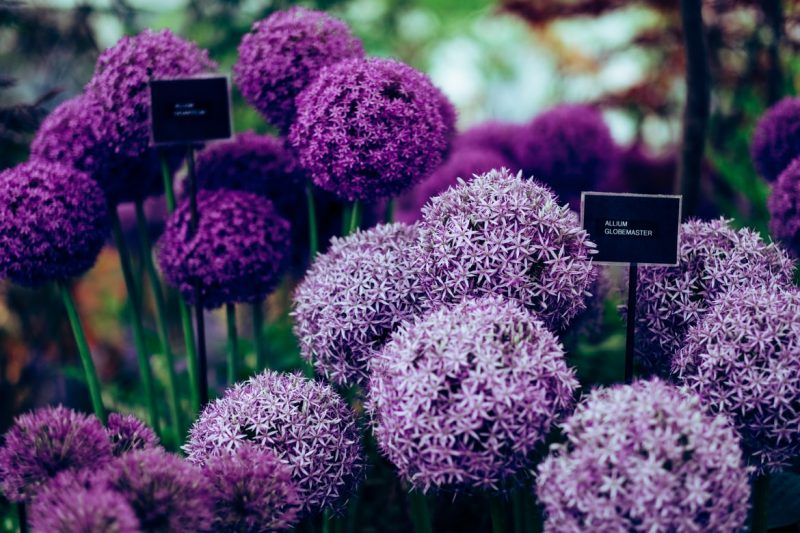
Ornamental onion is a perennial flowering species. Perennial flowering species represent the largest group of plants used for decorating parks and gardens. They carry out their biological cycle over several years. They bloom every year and some of them bear fruit every year. Perennial flowering plants are characterized by a great variability of shape, size, and color of flowers or inflorescences, of the period and duration of flowering.
Unlike annual and biennial species, perennials annually undergo a period of dormancy, which is essential for the quantity and quality of their flowering. The proper months for the dormancy period are related to the origin of the plants and the climatic conditions in which they initially developed and evolved.
Genus Allium
In addition to the well-known horticultural varieties – onions, garlic, leeks, etc. – the genus includes several ornamental plants with flowers, which are sometimes slightly perfumed. All species, if the leaves and stems are crushed, give off a pungent smell of garlic.
Some varieties have very large inflorescences, beautifully colored, others are star-shaped, and some varieties have pendant flowers, extremely tender.
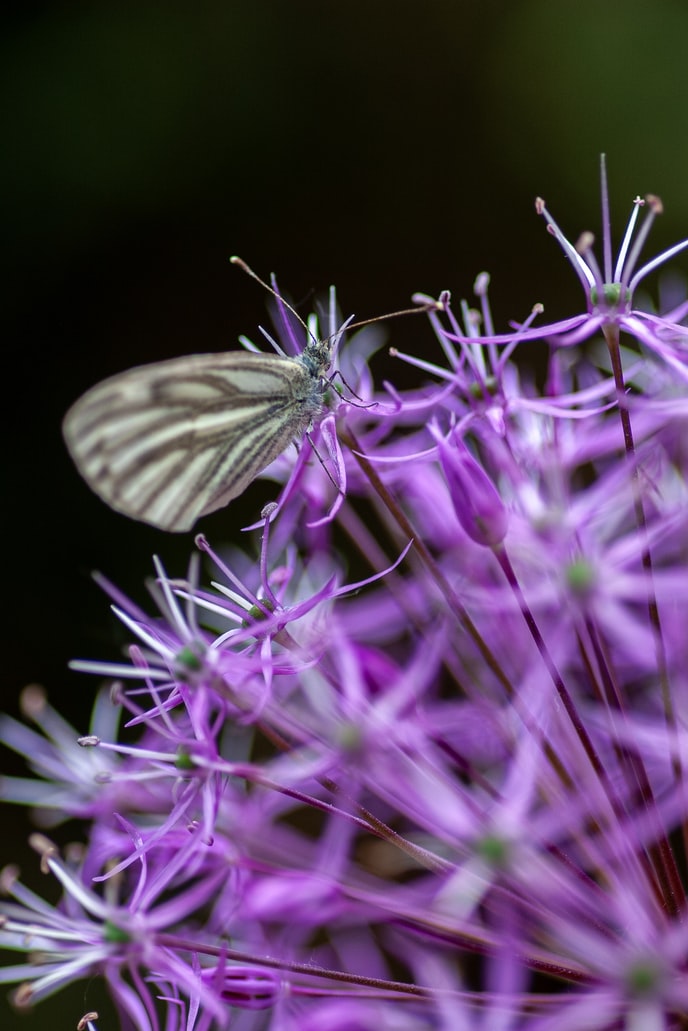
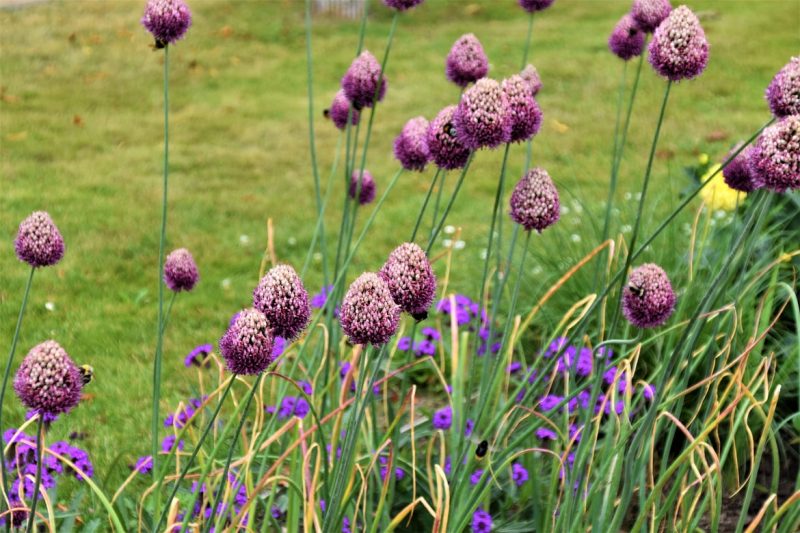
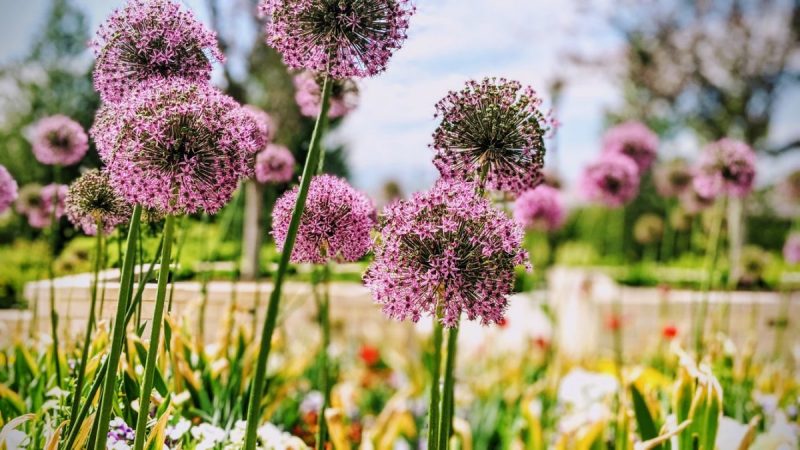
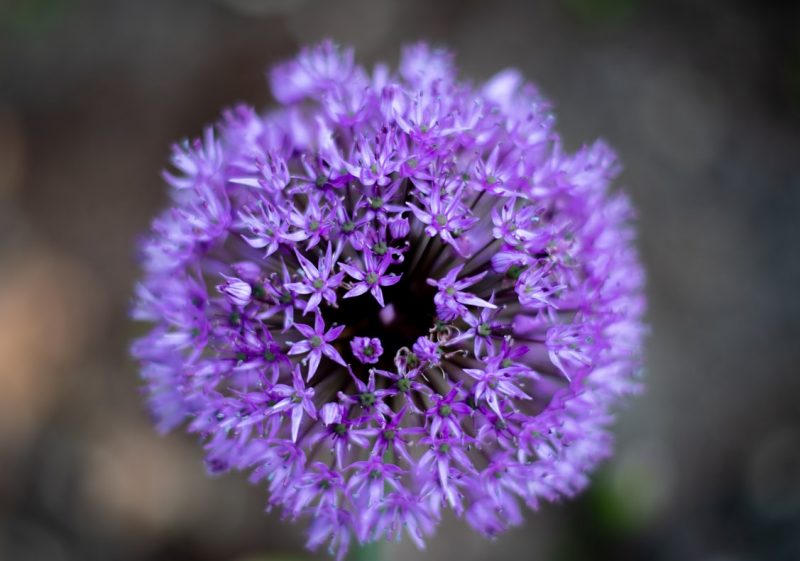
Decorative onion species
Allium giganteum has a huge flower compared to the other varieties: it is 15 cm in diameter and the color is purple.
Allium christophii is considered to be the most beautiful variety of all because it has dense purple-amethyst flowers. They are fragrant and can be used in bouquets/vases with water. They can also be kept dry.
Allium aflatunense (Persian onion) has spherical, dense, dark purple flowers and it attracts bees. Immediately cut after it blooms, it will remain fresh if kept in vases with water for about three weeks.
Allium sphaerocephalon has elongated red-purple flowers and goes well with Astrantia, Geranium, and Lavender. It is recommended to plant it in large groups and mask somehow the not very decorative foliage. It grows well in direct sunlight, but it also withstands partial shade.
Allium moly – it blooms from June to August and it has star-shaped, light yellow flowers with gray reflections.
Decorative allium or Ornamental onion
It can be planted in rock gardens, next to sidewalks, in layers, but also pots. It blooms from spring to mid-summer, depending on the variety.
The floral stem is tubular, hollow on the inside, but solid, and bears a single flower. After the flowers have withered, it is good to continue watering the plant because this is the period when the bulb accumulates minerals.
Growing
Planting decorative onions does not differ much from traditional onions. At the beginning of March, onion bulbs have to be planted in a loose and well-fertilized soil (with natural fertilizers), at a depth of about 8 – 10 cm and with a distance between them of 10 – 30 cm. It is advisable to mix the soil with a little sand to improve water drainage. Also during this period, the protection of plants that were left outdoors during the winter should be removed. In the beginning, water the bulbs that are in the germination phase more and use a diluted liquid fertilizer (half of the recommended dose). In some species, the withered flowers will make very beautiful fruits, and the seeds can be used for propagation.
Although they grow and develop well and in a shadier place, it would be advisable to plant allium in such a way as to benefit from as much sunlight as possible. Thus, the plant will be greener and more vigorous, and the inflorescences greater in number.
Recommended products
-
You can find products on a different store
Change Store -
You can find products on a different store
Change Store -
You can find products on a different store
Change Store -
You can find products on a different store
Change Store -
You can find products on a different store
Change Store -
You can find products on a different store
Change Store -
You can find products on a different store
Change Store -
You can find products on a different store
Change Store -
You can find products on a different store
Change Store -
You can find products on a different store
Change Store -
You can find products on a different store
Change Store -
You can find products on a different store
Change Store -
You can find products on a different store
Change Store -
You can find products on a different store
Change Store -
You can find products on a different store
Change Store -
You can find products on a different store
Change Store -
You can find products on a different store
Change Store -
You can find products on a different store
Change Store -
You can find products on a different store
Change Store -
You can find products on a different store
Change Store -
You can find products on a different store
Change Store -
You can find products on a different store
Change Store -
You can find products on a different store
Change Store -
You can find products on a different store
Change Store
Caring
In general, decorative onions do not require special care.
First of all, you need to water the plants regularly, especially if the season is dry.
As for the soil, it does not need to be “fed” regularly. A minimum of care during flowering should be sufficient to keep the plants healthy throughout the season.
During the winter, the decorative onion bulbs can be covered with foil to protect them from frost.
Ornamental onion species thrive in a sunny place, protected from winds and with well-drained soil. But there are also some species with slower growth that grow very well in damper and colder soils.
If the soil is too poor, then a balanced fertilizer should be applied in the spring following the year of planting. Allium can also be grown in pots. It grows best in deep pots, where it should be planted in a mixture of universal soil and sand.
Diseases and pests
In general, these species are resistant to diseases, but downy mildew or rot may occur. The pests that might attack this plant are snails and leaf miners.
Recommended products
-
You can find products on a different store
Change Store -
You can find products on a different store
Change Store -
You can find products on a different store
Change Store -
You can find products on a different store
Change Store -
You can find products on a different store
Change Store -
You can find products on a different store
Change Store -
You can find products on a different store
Change Store -
You can find products on a different store
Change Store -
You can find products on a different store
Change Store -
You can find products on a different store
Change Store -
You can find products on a different store
Change Store -
You can find products on a different store
Change Store -
You can find products on a different store
Change Store -
You can find products on a different store
Change Store -
You can find products on a different store
Change Store -
You can find products on a different store
Change Store -
You can find products on a different store
Change Store -
You can find products on a different store
Change Store -
You can find products on a different store
Change Store -
You can find products on a different store
Change Store -
You can find products on a different store
Change Store -
You can find products on a different store
Change Store -
You can find products on a different store
Change Store -
You can find products on a different store
Change Store















































































































































































































































































































































































































































